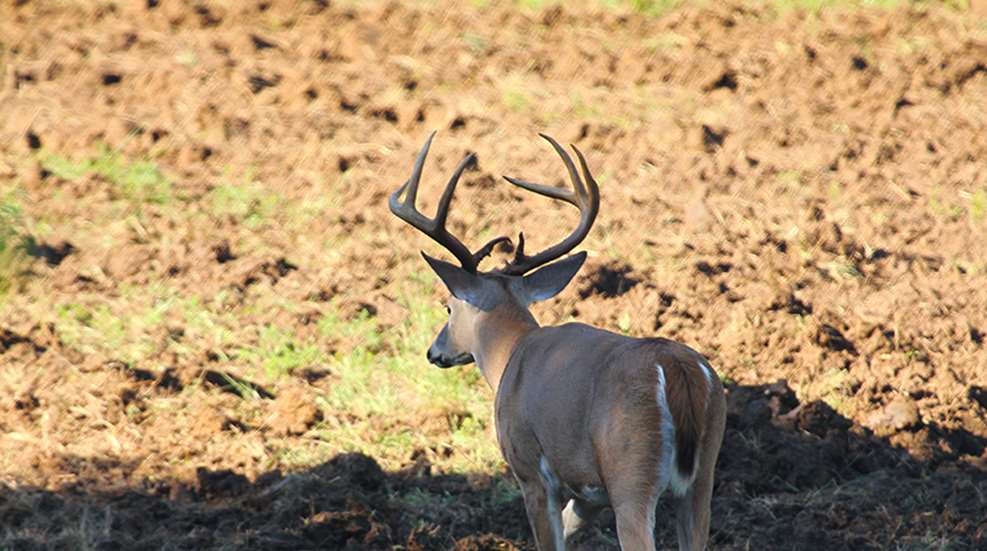
Spring is upon us, and the time to start planting perennial food plots that will benefit wildlife is now. Here’s a straightforward 10-step guide to doing it properly.
1. March-April: When the ground thaws and begins greening up, you need to decide what type of forage you wish to plant right away. Spring-blooming perennials such as protein-rich clover help does deliver healthy fawns and help bucks grow racks. Fall-geared annuals like oats, winter wheat and turnips attract deer during the hunting season. I recommend a variety of both perennials and annuals; but for the perennials, you’ve got to get going right now.
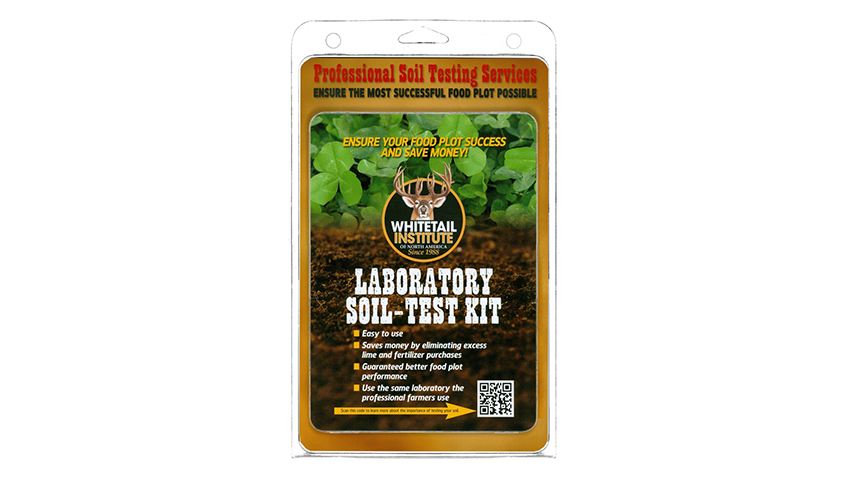
2. Late March-Early April: Take a soil sample. Either order a kit from whitetailinstitute.com or get one from your local county extension office. Take a few core plugs of dirt from your prospective plot locations and send them in. The results will reveal the pH level of your soil, and therefore how much lime and/or fertilizer it’ll need for best results. This step cannot be stressed enough.
3. March-April: Clear your plot locations of large rocks and brush. This will save your equipment later.
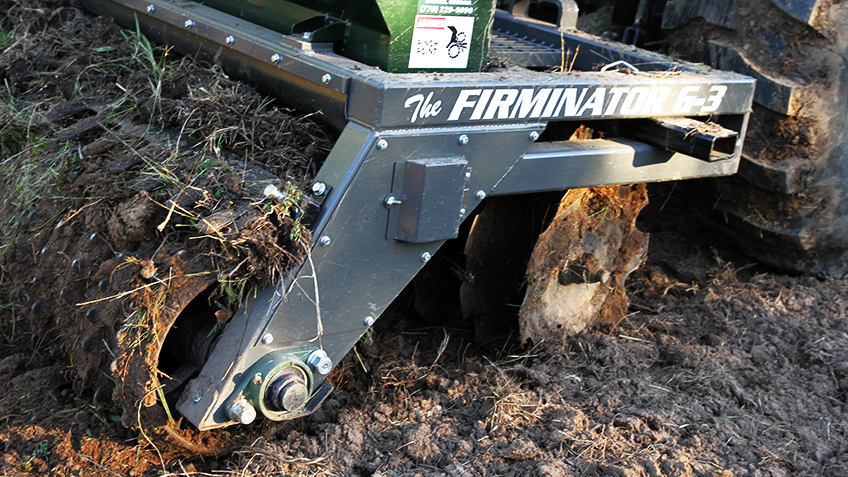
4. March-April: Buy seed and equipment now so you’ll have it handy when rain is in the forecast and it’s time to plant. If you don’t have implements such as a sprayer, disk, drag, seed spreader or an all-in-one implement like a Ferminator (see below), you’ll need them soon. You’ll need seed—now is the time to order if you plan on purchasing whitetail-optimized seed like that from Evolved, although some folks believe seed from your local feed store will do just fine. Additionally, you’ll potentially need lime, fertilizer and a herbicide product.
5. April: Spray and/or brush hog new plots to reduce grass and weeds. For really grassy areas that haven’t ever been planted, getting rid of grass and weeds is critical, or they’ll reclaim your plot soon after you waste your money fertilizing it. An ATV- or tractor-mounted sprayer is best, but they’ll cost you around $500 minimum. For small plots, a hand/ or backpack sprayer will work. Buy Roundup or a similar generic herbicide product and carefully follow the directions for diluting with water based on plot size.
6. April-May: Disk the ground until you have 4 inches or so of loose topsoil. While heavy implements work best, smaller ATV implements can work with many passes.
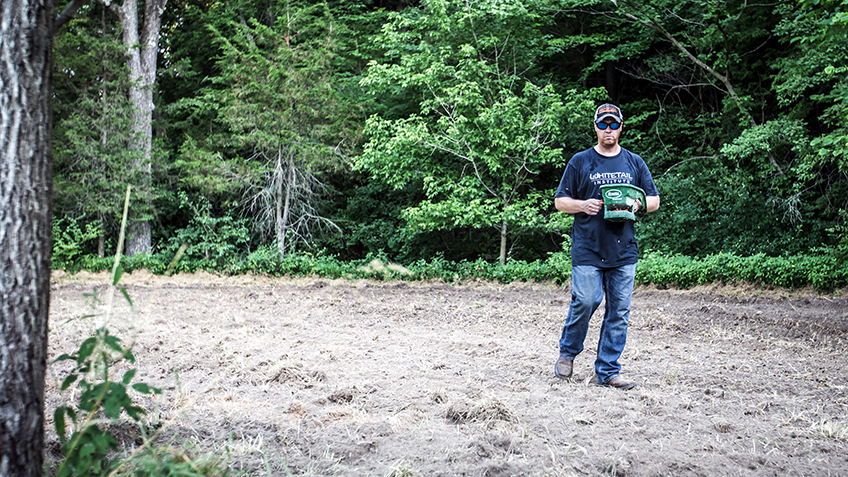
7. March-July (depending on region—see com for a planting calendar): Plant your crop. Try to plant when the soil is moist and rain is expected, but always plant within your area's suggested time window. Most seeds types can be broadcast with hand, push-type or mechanized seed spreaders.
8. Immediately After Planting: Drag or pack the seed until it’s slightly covered. Seeds need good contact with the ground to grow—the larger the seed, the deeper it should be buried.
9. Immediately After or During Planting: Fertilize the plot with the recommended fertilizer from your soil sample.
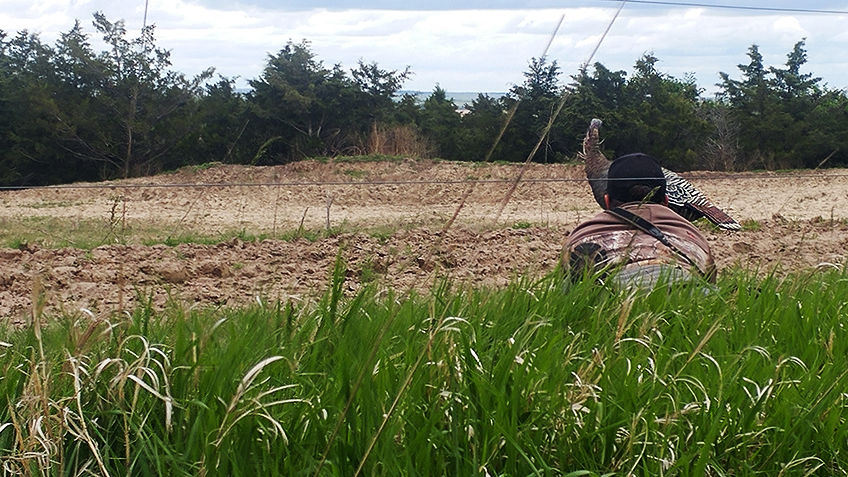
10. Pray for Rain! If it comes, watch your lucky clover pop up, and notice the deer and turkeys as they begin flocking to it.
■ ■ ■
The Ferminator
I don’t mean to sound like an advertisement here, but when I find a product that makes my deer hunting obsession easier, more productive and less time consuming, I tell people about it. Once such product is the Ferminator all-in-one food plot implement. It has changed my life.
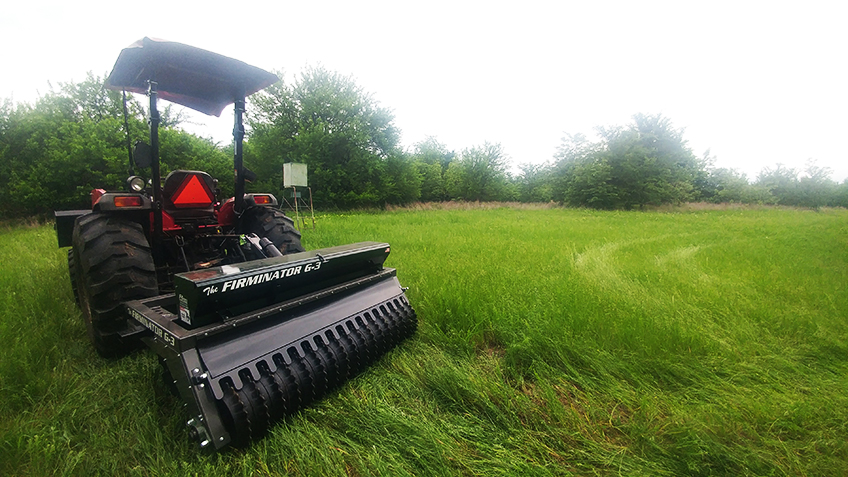
I live alone, and it takes a tremendous amount of time and effort for me just to attach various implements to my tractor. It usually goes something like this: After three or four back-ups, go-forwards, hop-offs and tractor repositionings, I finally get my plow attach my tractor’s 3-point hitch. I then drive to a plot, disk the ground, drive it back to my barn, unhook it, attach a seeder, drive it to the plot, seed the ground, drive it back, unhitch it, then hook up to the drag … and so on. It takes forever.
Fact is, if you’re serious about planting medium- to large-sized food plots but you either don’t have help available or you’re not a farmer who already has a bunch of implements on hand, the Ferminator will save you time and money in the end. This all-in-one food plot implement is heavy duty, quality-built and best of all, it works!
First off, its plow is much heavier than most equal-sized disks, so it really breaks up the ground nicely in one or two passes. If your ground is already broken, you can adjust its blades’ aggressiveness. Next, its integral seeder is a gravity feed hopper that can be adjusted for seed size. It’s actuated by the heavy cultipacking wheel underneath it.
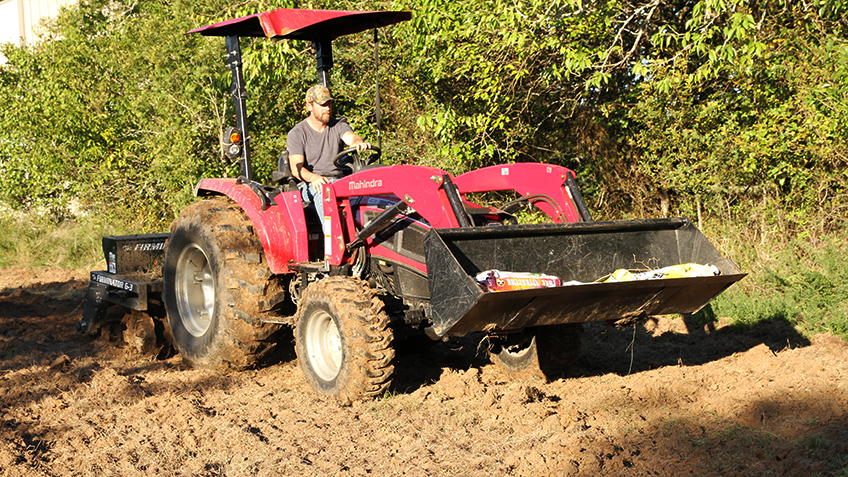
It all works like this: As you pull the Ferminator with the seed and fertilizer loaded, it plows the ground. Immediately after the furrows are made, seeds are dropped into them, just before the furrow is smoothed by the packer that plants the seed. So in one pass in all but the roughest, unbroken ground, you can plow, plant, fertilize and pack your seed. It also has a sturdy platform on which you can stack additional seed to keep runs back to the barn at a minimum. In sum, the Ferminator saves hours and backbreaking work.
Sure, it’s expensive at around $6,000 to $12,000 depending on the size model you choose (one is available for an ATV), but when I think about it, that’s about the cost of all the implements if I bought them separately. For me and my biggest enemy—father time—the Ferminator makes a lot of sense.



































